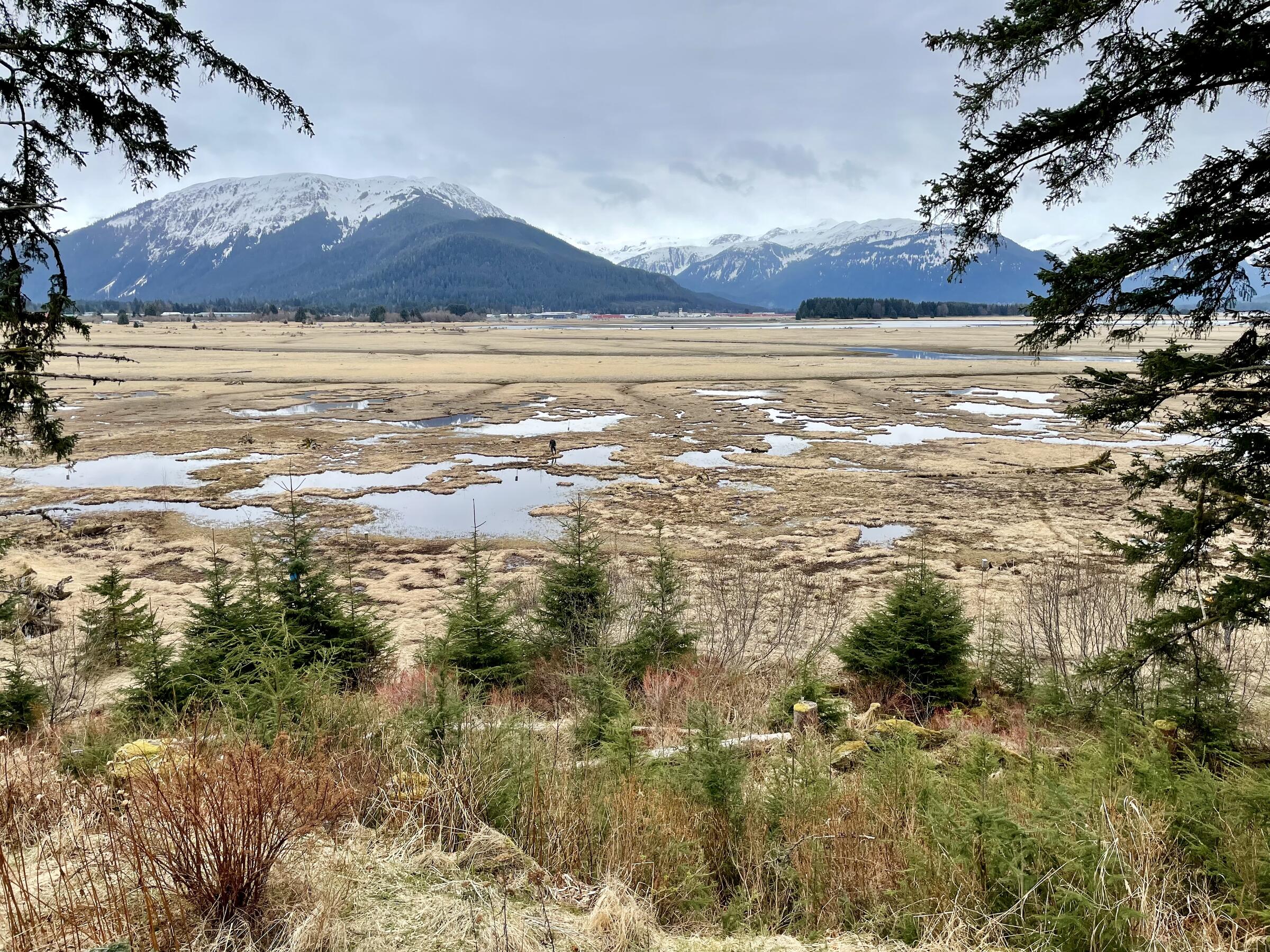The 4,497-acre Taashuyee-Chookan.aani, or Mendenhall Wetlands complex, is located in Juneau, Alaska in Áak'w Ḵwáan Territory on the ancestral lands of the Tlingit, Haida, and Tsimshian peoples. The Alaska Department of Fish and Game (ADF&G) manages these wetlands as part of the Mendenhall Wetlands State Game Refuge, which sits within the 17-million-acre Tongass National Forest. The Taashuyee/Mendenhall Wetlands have been designated as a globally recognized Important Bird Area by the National Audubon Society in 2007.
The Taashuyee/Mendenhall Wetlands complex has the third-greatest acreage of vegetated tidal salt marsh of all estuaries in Southeast Alaska. It is widely acknowledged to be one of the key migratory waterfowl and shorebird stopover locations of coastal Alaska. The wetlands are bordered by coniferous forest and open salt water. It includes supratidal meadows, a high salt marsh dominated by grasses, and a low salt marsh dominated by Lyngbye sedge. Within the salt marsh are mud and sand flats with numerous intertidal channels. One major river (Woosh eelʼóox̱ʼu héen or Mendenhall River) bisects the area and 14 freshwater streams flow into the wetlands. All of these rivers and streams support Pacific salmon and other fish which contribute to the richness and economy of the area. The area also contains several freshwater and brackish ponds.
The Mendenhall Wetlands are of outstanding value to waterbirds, as well as certain grassland and wet-meadow songbirds and raptors. It is used significantly both for resting, and foraging for food, most notably in the network of brackish sloughs. Throughout early spring and early fall, many species of ducks and many taxa of geese favor the area. From April through May, a large number of shorebirds pass through. The southward shorebird migration is much longer and less regular, lasting from late June to early October. At that season, except for unpredictable brief big flights, the birds are spread widely amidst the tall grasses and sedges, thus being usually much less observable than in the spring. The wetlands are also valuable during migrations, primarily April and late August into early November, for a great variety and moderate numbers of raptors, including Short-eared Owls.
Since the Mendenhall Wetlands is located within the boundaries of Juneau—a major Alaskan city and capital, as well as a tourist destination—it is used for a wide variety of activities. Most noteworthy are birding, hunting, and walking (especially on the Airport Dike Trail, found along the Southeast Alaska Birding Trail) as well as research and education. Some of the land is destined for other uses but currently retains wetland characteristics that make it useful for birds.
The Mendenhall Wetlands could be one of the most threatened Important Bird Areas in Alaska. It is surrounded by major urban development and immediately adjacent to an international airport. Also, immediately adjacent to the wetlands is Juneau's largest sewage treatment plant, the city and borough's landfill, and a large salmon aquaculture facility that discharges millions of pounds of ground-up salmon each year. Besides the direct threats that these facilities pose to birds and their habitat some plans and actions could diminish the value of these wetlands for birds. These include the heavily debated proposed Juneau Douglas North Crossing, airport expansion, and land acquisition of accreted lands by adjacent landowners. Read more about the threat of a "second crossing" on Taashuyee-Chookan.aani.
For more information, please see the Glacial Rebound on Taashuyee (Mendenhall Wetlands) Storymap—a project supported by the U.S. Fish and Wildlife Service and Southeast Alaska Land Trust.
How you can help, right now
Donate to Audubon
Help secure the future for birds at risk from climate change, habitat loss and other threats. Your support will power our science, education, advocacy and on-the-ground conservation efforts.
1% for the Planet
We are proud to be part of the 1% for the Planet network. If you own a business, please consider joining 1% for the Planet to support Audubon Alaska’s conservation efforts.





